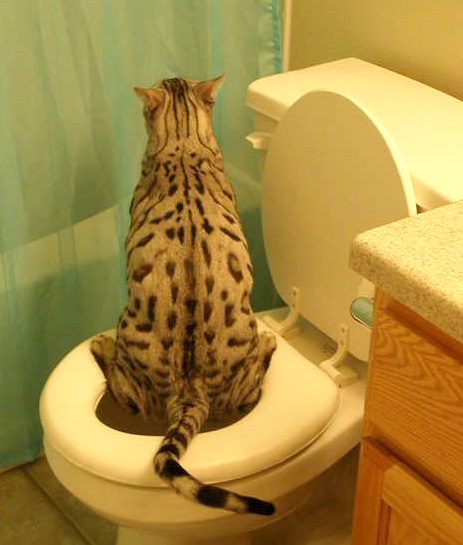Reasons You Should Never Flush Cat Poop Down Your Toilet - Important Facts
Reasons You Should Never Flush Cat Poop Down Your Toilet - Important Facts
Blog Article
Right here below you can discover a lot of superb help and advice in relation to How to Dispose of Cat Poop and Litter Without Plastic Bags.

Introduction
As cat proprietors, it's important to be mindful of how we deal with our feline buddies' waste. While it may appear hassle-free to purge cat poop down the commode, this method can have detrimental effects for both the atmosphere and human health.
Alternatives to Flushing
Luckily, there are safer and much more liable ways to take care of cat poop. Think about the adhering to options:
1. Scoop and Dispose in Trash
The most common method of throwing away pet cat poop is to scoop it into an eco-friendly bag and throw it in the trash. Make certain to utilize a dedicated trash scoop and throw away the waste immediately.
2. Usage Biodegradable Litter
Go with biodegradable cat trash made from materials such as corn or wheat. These clutters are eco-friendly and can be securely gotten rid of in the trash.
3. Hide in the Yard
If you have a yard, consider hiding pet cat waste in a designated area far from vegetable yards and water sources. Make sure to dig deep adequate to avoid contamination of groundwater.
4. Set Up a Pet Waste Disposal System
Buy a pet dog waste disposal system especially made for cat waste. These systems use enzymes to break down the waste, reducing odor and ecological impact.
Health Risks
Along with environmental concerns, flushing feline waste can additionally pose wellness risks to humans. Cat feces may consist of Toxoplasma gondii, a bloodsucker that can create toxoplasmosis-- a possibly extreme illness, particularly for expecting ladies and individuals with weakened immune systems.
Environmental Impact
Flushing cat poop introduces dangerous pathogens and bloodsuckers right into the water supply, positioning a considerable risk to aquatic communities. These pollutants can negatively affect marine life and compromise water quality.
Conclusion
Responsible animal ownership extends beyond giving food and sanctuary-- it additionally entails correct waste monitoring. By avoiding purging feline poop down the bathroom and choosing alternative disposal methods, we can minimize our environmental footprint and protect human health.
CAN I FLUSH MY CAT'S POOP DOWN THE TOILET?
Always avoid flushing cat poop down the drain because not only could it potentially contain harmful parasites called toxoplasmosis, the litter could sit in your line and lead to a clog.
Plenty of waste gets flushed down your toilet every day, so what harm could a little cat poop and cat litter do? The answer is a lot, which is why you never want to send it down your drains.
Can I Flush My Cat's Poop Down The Toilet?One of the biggest problems with flushing your cat’s presents is the harmful parasites in your feline’s stool called toxoplasmosis. Extremely dangerous for humans, especially pregnant women and people who are immunocompromised, these parasites can cause a multitude of problems for unborn babies and even cause death or miscarriage if the infection happens early. That’s why you should always avoid touching cat poop. Also, water systems are not equipped to handle toxoplasmosis and are unable to destroy the parasite before it’s sent back into the environment, potentially jeopardizing the health of local area wildlife, specifically marine life.
Flushing cat poop could also lead to a future drain clog. Try as you may to eliminate any litter from it, there will always still be some stuck on there – and even if it says flushable on the label, it’s not! Cat litter is made up of bentonite clay, which has the tendency to harden when wet, creating a thick, almost cement-like quality. Cat litter that ends up down the drain can expand from the moisture in the pipes and then harden, blocking any wastewater. If you have a septic tank or a cesspool, it cannot handle cat litter either, no matter what kind. If it solidifies in the tank, in any of the system’s major parts like the inlet baffle, it’ll create some expensive problems.
The best way to dispose of cat poop safely is to scoop it into a bag and throw it into the trash – and ways of dealing with the smell include adding baking soda and replacing the box more.
Now that we’ve explained the potential harm that flushing cat poop can cause to you and your drains, you might be wondering the best way of dealing with it. Unfortunately, it’s the old-fashioned way of scooping it into a bag and then placing it into a trash can. They also make pet-proof trash cans that lock in the smell, so that you don’t have to always immediately take it out. If you’re tired of smelling the litter box after even just one use from your feline, there’s things you can do to help combat that smell. Adding baking soda to the litter will reduce smells, but just don’t add too much or your cat will no longer want to use the box. You could also replace the box more frequently, at least once a year, as those smells can just seep inside the scratch marks. Lastly, try changing to a new litter formula – some are better with smells than others.

I came across that write up about Don’t flush cat feces down the toilet when looking around the search engines. For those who enjoyed our blog post please be sure to share it. Thanks so much for going through it.
Give Me A Quote! Report this page